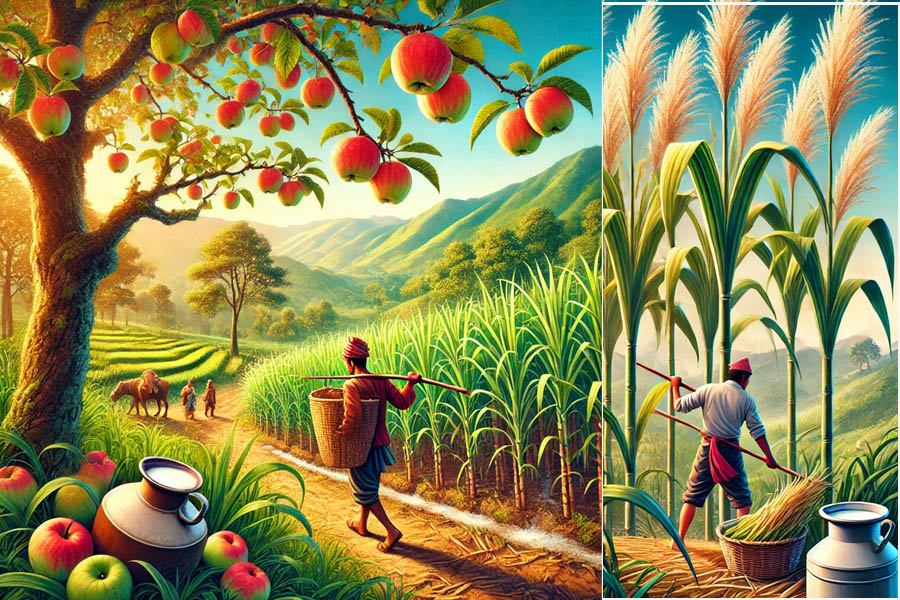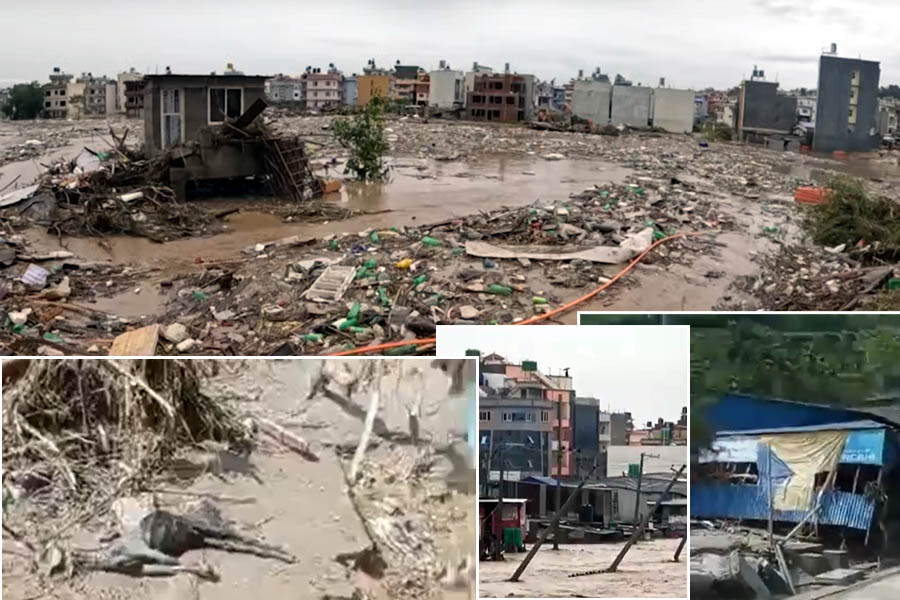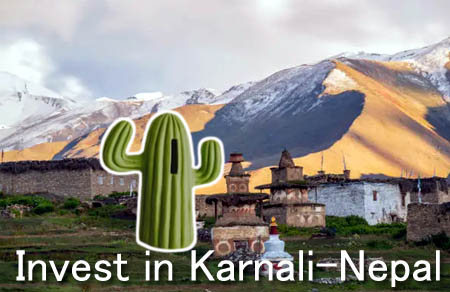
As the grand festivals of Nepal like Dasain and Tihar approach, they bring not only joy but also hope for the agricultural sector. However, for many farmers across the country, especially those involved in sugarcane, milk, and apple production, the festive cheer seems distant. Despite the government's recent efforts to settle debts and improve market conditions, a significant gap remains between promises made and the realities faced by farmers.
Sugarcane and Milk Farmers: A Long-Awaited Relief
The government has made strides toward addressing long-standing financial issues, particularly for sugarcane and milk farmers. A recent initiative led by Agriculture and Livestock Development Minister Ramnath Adhikari saw the release of nearly 2 billion rupees to pay off pending dues. This includes Rs 1.45 billion allocated to sugarcane farmers across eight districts, including Kanchanpur, Bara, and Sarlahi. The move aims to ease the financial pressure on farmers who have been waiting for subsidies and payments for years.
For the milk farmers, Rs 600 million has been set aside for disbursement through the Dairy Development Corporation (DDC). Farmers are now optimistic that they will receive their payments before Dasain, fulfilling a promise made by the government to ensure they can celebrate the festival with financial security.
Despite these efforts, the delays in payments have taken a toll on many farmers. While the funds are finally reaching the districts, it raises the question of whether these relief measures can mitigate the broader challenges of an inefficient agricultural system.
Apples: The Struggle of Karnali's High-Altitude Farmers
In the rugged terrain of Karnali Province, apple farming is a vital livelihood for many families, especially in districts like Jumla, Humla, and Dolpa. Yet, despite producing over 31,000 metric tons of apples annually, farmers struggle to sell their harvest due to poor infrastructure, market access issues, and the high cost of transportation. In districts like Humla, where road closures and rains hinder transport, apples often rot before reaching markets.
The transportation costs are prohibitive for many farmers. In some cases, the airlift charges to Nepalgunj and Surkhet can go as high as Rs 130 per kilogram, forcing farmers like Dasharath Rokaya to store apples traditionally, with much of the harvest going to waste. Similarly, in Kalikot and Dolpa, where roads remain inaccessible during the crucial harvest season, apples that could fetch high prices rot in local storage facilities due to lack of demand.
Local traders, middlemen, and high transport fees further eat into the farmers' profits. Apples that sell for a meager Rs 50 per kilogram in Karnali's local markets are priced as high as Rs 250 per kilogram in Kathmandu, creating a striking disparity. The involvement of middlemen, who take the lion’s share of the profits, leaves little for the farmers who do the hardest part—growing the apples.
Mustang and Dolpo Apples: A Promise Cut Short
Mustang's apple farms, famous for producing varieties like Red Delicious, Royal Delicious, and Fuji apples, are currently in full harvest mode. However, the early harvesting of apples before they reach full maturity threatens to damage the region's reputation for quality. Mustang produces over 6,500 metric tons of apples annually, and despite the challenging conditions of disease and poor pollination last year, the district continues to be a vital contributor to Nepal's apple industry.
Dolpo apples, known for their organic quality and sweet taste, are also in demand, but the story of their production is one of continuous struggle. The Himalayan districts face daunting challenges, including poor road access, steep transportation costs, and reliance on unreliable air routes during the monsoon season. Although Dolpa exported 149 metric tons of apples this year, the journey to markets in Kathmandu and Nepalgunj is fraught with difficulties, forcing farmers to sell their produce for as low as Rs 30-40 per kilogram while traders in urban areas sell them for Rs 150 per kilogram.
Looking Ahead: What Needs to Change?
The situation for farmers, especially those in remote areas, remains dire. The government's recent efforts, while commendable, are only the first step in addressing the broader systemic challenges of Nepal's agricultural sector. Improved infrastructure, better market access, cold storage facilities, and policies to support farmers beyond festival payments are urgently needed.
For the sugarcane and milk farmers, prompt payments before Dasain provide some relief, but more sustainable support is necessary to ensure they don’t face the same delays every year. For apple farmers in Karnali and Mustang, investment in road networks and air transport subsidies could help close the price gap and ensure they receive fair prices for their produce.
Nepal's agricultural sector has immense potential, particularly with its organic products like apples that can command high prices in both domestic and international markets. However, without addressing the underlying logistical and market challenges, farmers will continue to struggle, and Nepal will miss out on the opportunity to elevate its agricultural economy.
As the festivals approach, the hope is that the government’s promises bring lasting change, not just a temporary fix for long-standing problems. Let’s hope that the farmers, who are the backbone of Nepal’s economy, can finally celebrate a prosperous and joyful Dasain this year.
#NepalFarmers 🌾 #AgricultureInNepal 🌱 #SupportLocalFarmers 🤝 #Sugarcane 🍬 #DairyFarmers 🐄 #AppleHarvest 🍏 #FarmersSupport 🚜 #KarnaliFarming 🌄 #SustainableAgriculture 🌍 #FoodSecurity 🍽️
Thank you for reading: globalpostheadline.com





